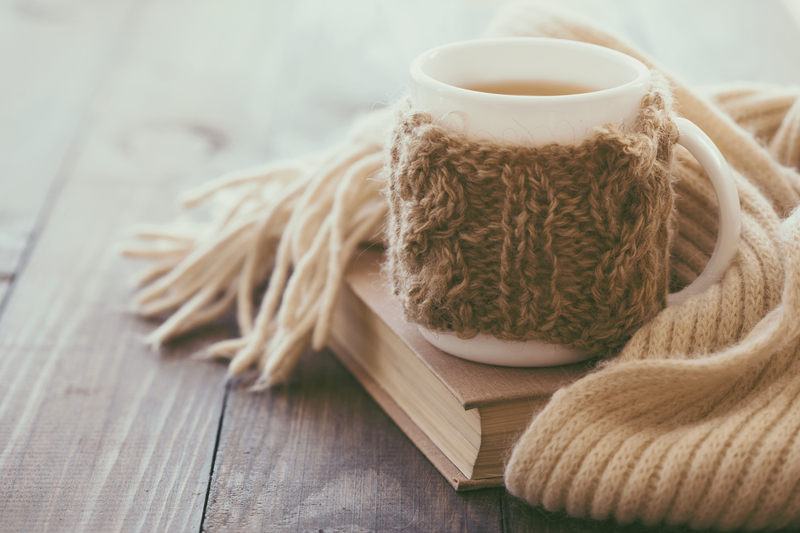Mastering Mold Control in Your Bathroom
Posted on 28/06/2025
Mastering Mold Control in Your Bathroom: The Complete 2024 Guide
Are you tired of constantly battling unsightly and stubborn mold in your bathroom? You're not alone. Bathroom mold problems affect millions of households every year, turning sparkling spaces into damp breeding grounds for unpleasant odors and potential health risks. Mastering mold control in your bathroom is essential for a clean, hygienic, and beautiful home environment.
Why Mold in Bathrooms Is a Common Issue
Bathrooms provide the perfect habitat for mold to flourish: warmth, humidity, and organic material like dust and soap residue. Mold spores float invisibly through the air, waiting to settle on damp walls, shower tiles, ceilings, and grout. If left unchecked, these bathroom molds can cause damage to your property and pose real health concerns--especially for those with allergies, asthma, or weakened immune systems.
- Excess Moisture: Showers, hot baths, and poor ventilation generate persistent moisture.
- Organic Debris: Soaps, shampoos, and stray hair feed mold growth.
- Poor Ventilation: Tight spaces and infrequent air exchange keep humidity high.
If you're serious about controlling mold in your bathroom, understanding its causes is your first step toward a fresh, healthy space.

Identifying Bathroom Mold: Signs and Symptoms
Not all bathroom mold is immediately visible. Learning to spot the signs and knowing where mold likes to hide is crucial in mastering bathroom mold prevention.
Common Signs of Mold in Bathrooms
- Musty Odors: A persistent, earthy smell often signals hidden mold.
- Black or Greenish Spots: Frequently visible on caulk, grout, and shower corners.
- Discoloration: Yellow or gray patches on walls, ceilings, or wallpaper.
- Bubbling Paint or Soft Walls: Indicates excess moisture and likely mold growth underneath.
- Allergy Symptoms: Sneezing, coughing, itchy eyes or skin irritation after spending time in the bathroom.
Tip: Use a flashlight to inspect less obvious spots like behind your toilet, under the sink, and around exhaust fans for concealed mold buildup.
The Health Risks of Bathroom Mold
Mastering bathroom mold control isn't just about aesthetics or cleanliness. Mold spores can trigger a range of health problems, including:
- Respiratory Issues: Asthma, wheezing, and persistent coughing.
- Allergic Reactions: Sneezing, rashes, red eyes, and congestion.
- Sensitivity: Those with immune suppression or chronic illness are particularly vulnerable.
If you or a family member experience these symptoms, thorough mold removal and ongoing bathroom mold prevention strategies should be a top priority.
Step-by-Step Guide to Mastering Mold Control in Your Bathroom
1. Immediate Mold Removal
To control bathroom mold, tackle visible spots immediately. Here's how:
- Protect Yourself: Wear gloves, goggles, and a mask.
- Mix a Cleaning Solution: Combine one cup of bleach with a gallon of water. Alternatively, use vinegar or commercial mold remover for a non-bleach option.
- Scrub Effectively: Use a stiff brush or sponge to scrub affected areas (caulk, tile, grout, ceiling corners).
- Rinse and Dry: Wipe with clean water and dry thoroughly with a towel or fan.
- Dispose of Cleaning Materials: Prevent mold spread by discarding used sponges or rags.
2. Address Hidden Mold
The true challenge of mastering mildew control in bathrooms lies in the places you don't see.
- Check Behind Fixtures: Look under faucets, sinks, and around the base of toilets for damp or softened materials.
- Investigate Seals: Replace discolored or crumbling caulk and grout as these can harbor continuous mold growth.
- Clean Bathroom Fans: Dust and clean exhaust fans regularly to prevent trapped moisture.
3. Preventing Recurrence
The secret to successful bathroom mold control is in ongoing prevention strategies:
- Improve Ventilation: Use an exhaust fan during and after showers or keep the window open. Aim for at least twenty minutes of airflow after each use.
- Dry Surfaces: Wipe down shower walls, mirrors, and windows daily with a squeegee or cloth.
- Fix Leaks Promptly: Repair dripping taps, faulty toilets, or leaky pipes to keep surfaces dry.
- Use Mold-Resistant Products: Upgrade to mold-proof paint, grout, and caulk designed for bathroom mold prevention.
- Dehumidifiers: For persistently humid bathrooms, a small dehumidifier can help keep moisture levels below 50%.
- Keep it Clean: Remove soap scum, hair, and dust regularly to eliminate organic material that fuels mold growth.
4. Long-Term Upgrades for Mold-Free Bathrooms
- Install a High-Capacity Exhaust Fan: Ensure every bathroom has a vented fan that matches its size and use patterns.
- Opt for Mold-Resistant Wallboard: Consider greenboard or cement board behind tiles and in high-moisture zones.
- Seal Tiles and Grout: Annual grout sealing prevents water seepage.
- Choose Wisely with Shower Curtains and Mats: Use mildew-resistant shower curtains and wash them weekly.
- Upgrade Lighting: Natural and strong artificial lighting discourage mold by drying out surfaces.
Smart Habits for a Mold-Free Bathroom
- Keep Clutter to a Minimum: Shampoo bottles, loofahs, and bath toys hold moisture--store elsewhere or dry thoroughly after use.
- Open Cabinets Regularly: Prevent trapped humidity by opening under-sink cupboards after steamy showers.
- Launder Towels and Mats Frequently: Damp fabrics are a mold magnet! Wash in hot water and make sure they dry completely.
- Monitor Humidity: Place a hygrometer in your bathroom. Aim to keep humidity below 50% at all times.
- Inspect Regularly: Set a reminder to examine tiles, grout, and walls each month.
Natural Alternatives to Chemical Mold Cleaners
Prefer a green approach to bathroom mold removal? Luckily, many household staples provide effective, eco-friendly alternatives:
- White Vinegar: Spray undiluted vinegar on moldy areas, let it sit an hour, then scrub and rinse.
- Baking Soda: Paste baking soda and water onto mildew, allow to soak, then scrub away.
- Lemon Juice: The acidity can help lighten stains and cut down odors.
- Hydrogen Peroxide: Spray 3% solution on affected areas, let bubble, then wipe clean.
- Tea Tree Oil: Mix a teaspoon of tea tree oil in a cup of water. Spray, allow to dry, and leave as a preventative.
Always test natural remedies on a small area first, especially on colored grout or delicate surfaces.
Mold-Resistant DIY Projects for Your Bathroom
If you're planning a bathroom renovation, selecting materials and finishes with mold control in mind will pay off for years to come.
- Tile Over Drywall with Cement Board: Cement board won't absorb moisture or foster mold like ordinary drywall.
- Mildew-Proof Caulk: Opt for silicone-based, mold-resistant caulk for all seams and corners.
- Paint with Mildewcide: Many paints now include mold inhibitors--ideal for walls and ceilings.
- Glass Shower Doors: Easier to clean and less mold-prone than curtains.
- Wall-Mounted Fixtures: Floating vanities and shelves promote airflow and make cleaning effortless.
When to Seek Professional Help for Mold
Most bathroom mold issues can be controlled with diligent cleaning and smart upgrades. However, some situations call for professional mold remediation:
- Large-Scale Infestations: If mold covers more than 10 square feet or keeps returning despite your efforts.
- Structural Damage: Soft walls, crumbling grout, or persistent leaks may require professional repairs.
- Hidden Mold: A musty smell with no visible source, or recent water damage in hidden spaces like crawl spaces or between walls.
- Severe Health Symptoms: If someone in your home develops unexplained illness consistent with mold exposure.
Experienced mold remediation specialists have the tools to safely remove dangerous colonies and identify underlying building issues.

Frequently Asked Questions: Mastering Bathroom Mold Control
Q: Is all black mold in the bathroom dangerous?
A: Not all black mold is toxic, but any type of mold should be addressed to minimize health risks and property damage.
Q: How often should I clean my bathroom to prevent mold?
A: For effective mold control in bathrooms, a weekly routine is ideal, while wiping wet surfaces daily will keep spores at bay.
Q: Can proper ventilation alone stop bathroom mold?
A: Good ventilation is essential, but must be combined with cleaning and leak repair. Fans alone cannot eliminate existed mold already present.
Q: What is the best mold-resistant paint for bathrooms?
A: Choose paints labeled "mold-" or "mildew-resistant," ideally in semi-gloss or satin for easy cleaning. Brands such as Zinsser and Benjamin Moore offer specific anti-mold formulas.
Conclusion: Take Control and Master Bathroom Mold
Mastering mold control in your bathroom is an achievable goal--one that delivers a healthy, inviting, and easy-to-maintain space for you and your family. With the right information, consistent habits, a few well-chosen upgrades, and regular attention, your bathroom can stay fresh, clean, and mold-free year after year. Start implementing these expert-backed strategies today and experience the difference!
Stay proactive, and you'll never have to worry about bathroom mold again.




